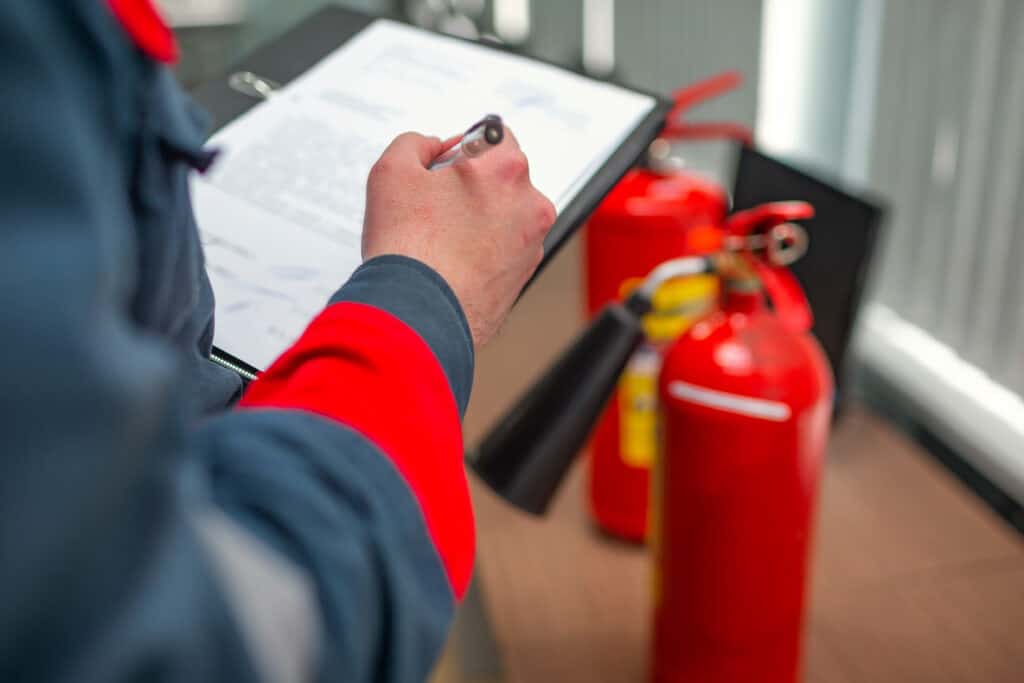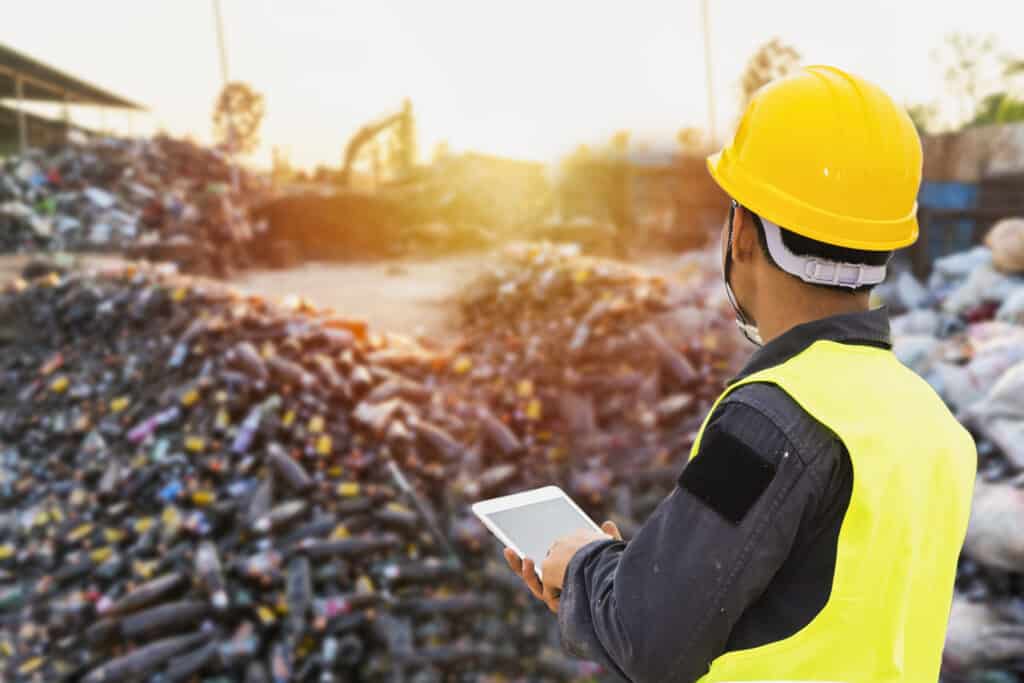Table of Contents
ToggleWhy Facilities Management Compliance Matters
Managing a facility is no small task, and ensuring compliance can sometimes feel like navigating a maze of rules and regulations. But keeping up with compliance isn’t just about avoiding fines, it’s about creating a safe, efficient, and legally sound workplace.
From workplace safety laws to fire regulations, equipment maintenance, and environmental standards, there’s a lot to stay on top of. Failing to meet compliance requirements can result in costly legal issues, reputational damage, and operational downtime. But don’t worry, we’ve got you covered.
This facilities management compliance checklist is designed to help you stay ahead of the curve, ensuring your facility is fully compliant with Australian regulations while maintaining efficiency and safety.
1. Workplace Health and Safety (WHS) Compliance
Keeping your workplace safe isn’t just a legal requirement—it’s about protecting your people. A well-managed facility prioritises the health and safety of employees, contractors, and visitors.
Key Australian Regulations:
State-State WHS Regulations:
Checklist & Why It Matters:
Just because everything looks fine doesn’t mean it is fine. Regular audits help spot risks before they become accidents, keeping employees safe and reducing potential legal liabilities.
You can’t expect people to follow safety protocols if they don’t know what they are. Training ensures everyone understands the risks and how to mitigate them, creating a workplace culture focused on safety.
Encouraging staff to report hazards means issues get addressed before they escalate into serious incidents, reducing downtime and ensuring compliance.
Fires can escalate in seconds. Having clear procedures and trained staff ensures a fast and effective response, protecting lives and property.
Asbestos exposure can cause severe long-term health issues, and improper management can lead to hefty fines. Compliance protects both people and business operations.
Why Does It Matter?
A proactive approach to WHS prevents injuries, keeps employees safe, and avoids legal complications. A safe workplace is a productive one!
2. Building and Fire Safety Compliance
Fire safety isn’t something you can take lightly. One overlooked issue, like a blocked emergency exit or a broken fire alarm, could have devastating consequences. Making sure your building and fire safety measures are up to standard is crucial for protecting lives and your business.
Key Australian Regulations:
Checklist & Why It Matters:
Regular inspections ensure all fire systems and equipment are ready to perform when needed. It’s about more than ticking a box, it’s about making sure your facility is truly safe and ready for any emergency.
In a crisis, every second counts. Blocked or hard-to-find exits can put lives at risk. Clear, unobstructed exits with proper signage give people a fast way out when they need it most.
Fire protection systems are only good if they work. Regular testing ensures everything operates smoothly in an emergency, providing vital protection for people and property.
Knowing what to do in an emergency can save lives. Drills help employees react calmly and correctly, while updated plans ensure everyone knows their role if the worst happens.
Up-to-date certificates show regulators that you’re serious about safety and compliance. It’s a simple step that can save a lot of headaches during an audit.
Why Does It Matter?
Fire safety compliance protects lives, prevents costly damage, and ensures legal adherence. Being prepared is always better than reacting to a disaster!
Undertaking routine building maintenance and fire safety services will ensure your compliances are kept in check.

3. Electrical, HVAC, and Equipment Maintenance
Facility downtime due to equipment failures can be frustrating and expensive. Ensuring all electrical, heating, ventilation, and air conditioning (HVAC) systems are well-maintained is key to keeping things running smoothly.
Key Australian Regulations:
Checklist & Why It Matters:
Faulty electrical gear can lead to fires or serious injuries. Regular testing catches issues before they become hazards, helping you avoid costly incidents.
Clean air isn’t just about comfort, it’s a health issue. Regular servicing keeps your systems efficient, improves air quality, and helps prevent breakdowns during extreme weather.
Power outages happen, whether from storms or grid issues. Reliable backup power keeps essential operations running and avoids downtime when the unexpected occurs.
Waiting for equipment to fail means bigger repair bills and longer disruptions. Preventative maintenance helps catch small issues early, saving you time, money, and frustration.
Why Does It Matter?
Staying compliant keeps your electrical, HVAC, and other systems working the way they should — safely, efficiently, and without unexpected breakdowns. It also means you’re ready if regulators show up and helps you steer clear of costly issues that could disrupt your team and day-to-day operations.
4. Environmental and Sustainability Compliance
Sustainability plays a big role in running a facility that’s both responsible and cost-effective. Meeting environmental regulations helps protect the planet, but it also saves you money and shows others that your organisation takes its responsibilities seriously.
Key Australian Regulations:
Checklist & Why It Matters:
Reducing landfill waste is great for the environment and also helps cut down on disposal costs. Proper recycling programs ensure that materials are disposed of responsibly, helping businesses stay compliant while reducing their environmental impact.
Slashing energy consumption not only saves money, it also lowers your facility’s carbon footprint. Audits help identify areas where energy is being wasted and offers insights into cost-effective solutions like LED lighting, smart thermostats, and energy-efficient appliances.
Dumping hazardous waste incorrectly can lead to significant fines and environmental damage. Proper disposal keeps toxic materials out of landfills and waterways, ensuring your business remains compliant and operates responsibly.
Investing in sustainable upgrades pays off in the long run. Solar panels can significantly reduce electricity costs, while water-saving fixtures help lower utility bills. LED lighting uses less power and lasts longer than traditional bulbs, reducing maintenance costs and improving energy efficiency.
Why Does It Matter?
Environmental compliance helps you do more than just meet the rules — it’s a smart way to cut costs, run more efficiently, and reduce your impact on the planet. Plus, when you prioritise sustainability, you’re not only lowering expenses but also building a stronger reputation and creating a healthier space for your team.

5. Contractor and Vendor Compliance
Bringing in external contractors and vendors can help keep your facility running smoothly, but it also introduces risks. If third-party providers don’t follow compliance standards, it can lead to safety issues, legal problems, and financial liabilities for your organisation. Making sure they meet compliance requirements is essential.
Key Australian Regulations:
Checklist & Why It Matters:
You wouldn’t trust an unqualified doctor to perform surgery, so why take the same risk with your facility? Ensuring that contractors have the right licenses and certifications confirms they are legally and professionally qualified to do the job safely and correctly.
Prevent legal disputes and ensure high-risk work is conducted safely.
High-risk tasks, such as electrical work, working at heights, or handling hazardous materials require special permits and risk assessments. These steps prevent accidents and ensure that all safety protocols are being followed.
Minimise liability for workplace accidents involving contractors. Past performance is a good indicator of future reliability. Checking a contractor’s safety history helps you avoid working with providers who have a track record of incidents or non-compliance, reducing risks on your site.
Protect your business from compliance breaches and legal risks. A handshake isn’t enough. Having a written agreement that outlines compliance expectations, safety requirements, and legal obligations protects your business. It ensures that if something goes wrong, responsibility is clearly defined.
Why Does It Matter?
Working with the right contractors and vendors means choosing people who are qualified, reliable, and focused on safety and compliance. Taking the time to verify their credentials, assess risks, and set clear agreements helps protect your business, avoid costly disputes, and keep your facility in line with Australian regulations.
6. Security and Access Control Compliance
Keeping your facility secure means thinking beyond just locks and keys. It’s about creating a safe environment for your people, protecting your assets, and making sure sensitive data stays private. Staying on top of security compliance reduces risks, shows that safety is a priority, and gives everyone peace of mind.
Key Australian Regulations:
Checklist & Why It Matters:
You can’t fix what you don’t know is broken. Regular audits help identify vulnerabilities before someone else does, giving you time to address them.
Outdated or non-compliant systems can fail when you need them most and may not meet legal requirements. Staying compliant ensures your security tech works and stands up to scrutiny.
Not everyone should be able to go everywhere. Access policies protect sensitive areas and help prevent theft or damage, keeping both people and assets safe.
Human error is a top cause of security breaches. Training ensures employees know how to protect data and act securely, reducing risks from within.
Why Does It Matter?
Good security compliance keeps your business protected, it safeguards your assets, looks after your team, and keeps customer data out of the wrong hands.

7. Compliance Documentation and Reporting
Having the right paperwork may seem like a chore, but it’s critical when something goes wrong, or when regulators come knocking. Proper records prove you’re compliant and make audits much easier to handle.
Key Australian Regulation:
Checklist & Why It Matters:
Up-to-date records prove you’re serious about safety and provide critical information if an incident needs to be investigated.
Expired permits can bring hefty fines and stop your operations in their tracks. Staying current keeps everything running smoothly.
Waiting for regulators to find a problem can be costly. Regular internal checks help you fix issues before they become major compliance failures.
Good compliance isn’t a one-person job. When everyone knows what’s needed and how to document it, staying compliant becomes a lot easier.
Why Does It Matter?
Keeping solid records is what backs you up when it counts, whether it’s proving you’ve done the right thing, staying on top of regulations, or making an audit quick and painless.
- Reduce legal risks and avoid fines
- Improve workplace safety and security
- Enhance energy efficiency and sustainability
- Lower maintenance costs and prevent unexpected failures
- Ensure smooth operations and business continuity
The Value of Compliance in Facilities Management
By implementing this facilities compliance checklist, Australian facilities managers can:
Need end-to-end compliance support? JKFM provides tailored solutions to help you meet all regulatory requirements while keeping your facility running efficiently.
Contact JKFM today to ensure your facility remains compliant and cost-effective!






